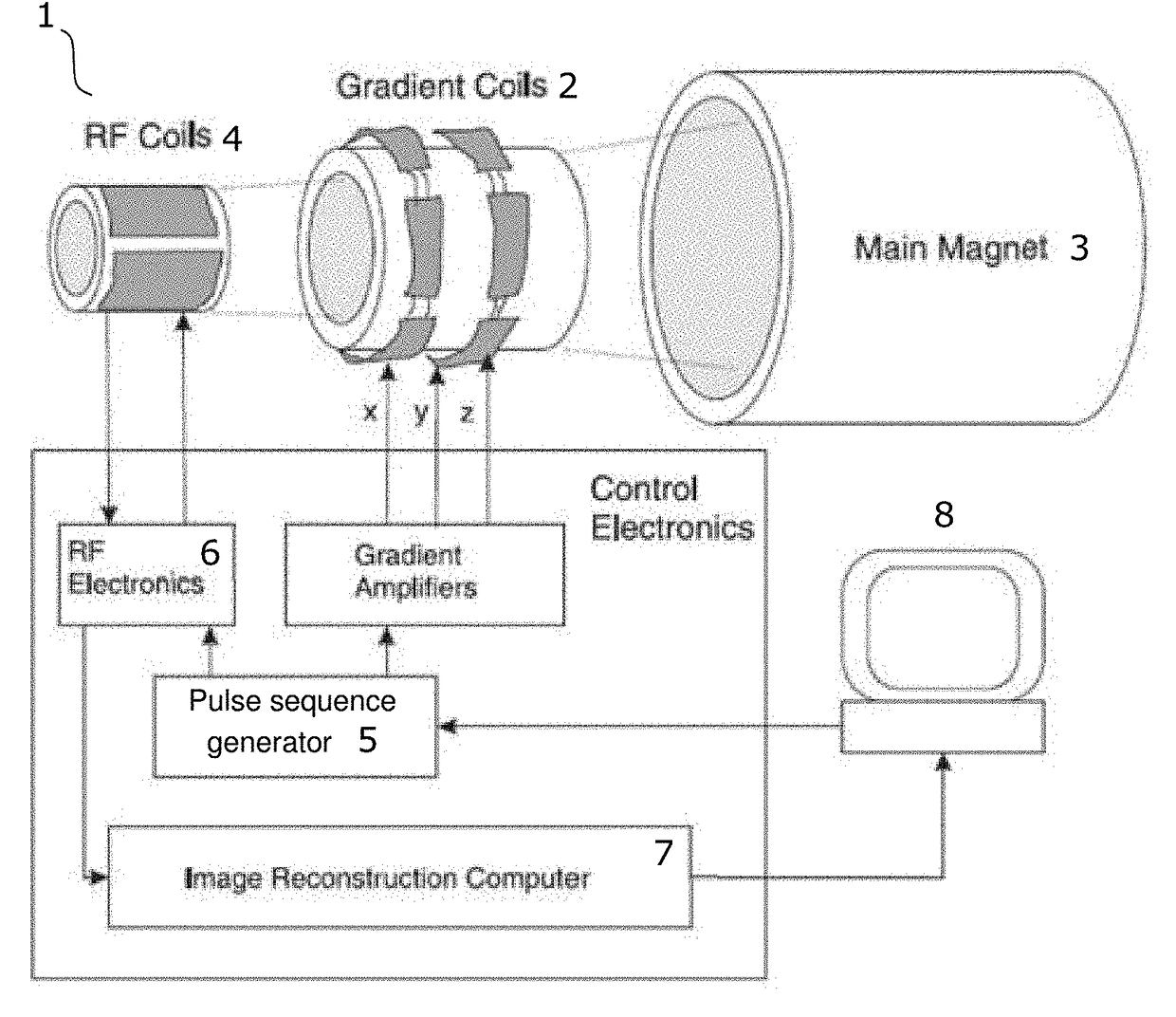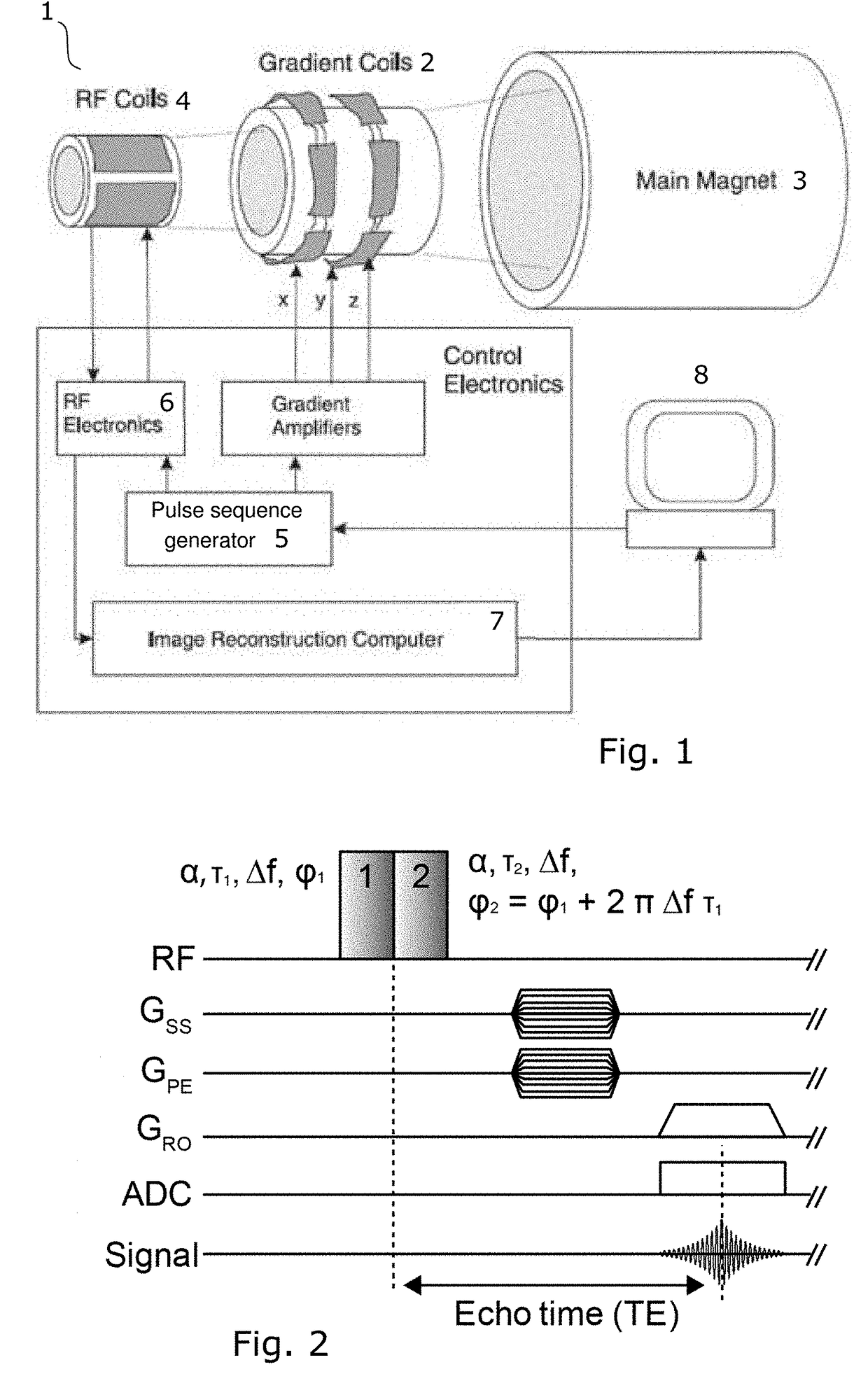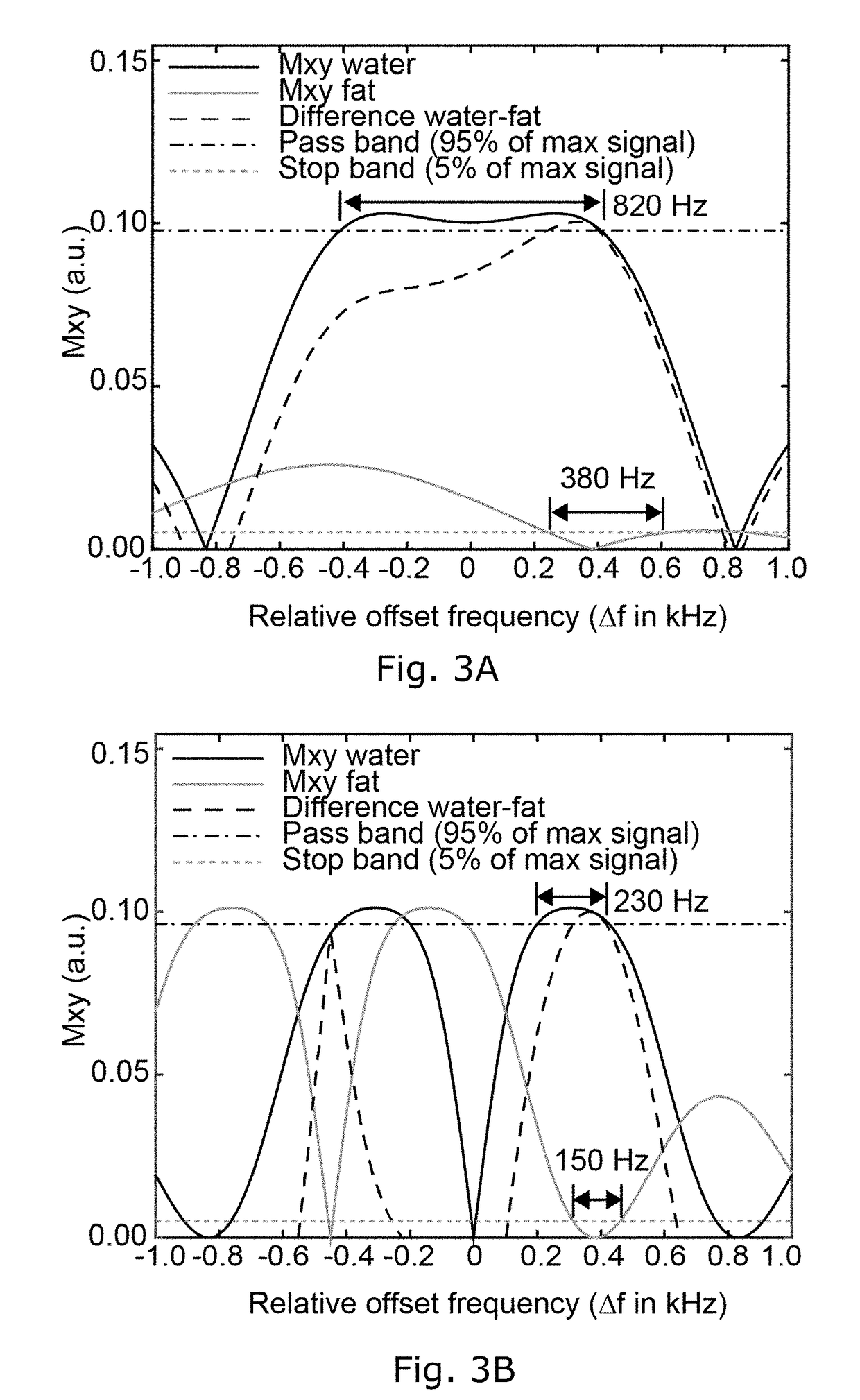Differentiated tissue excitation in MRI
a tissue excitation and magnetic resonance technology, applied in the field of magnetic resonance imaging, can solve the problems of increasing the difficulty of suppressing fat resonance, increasing the complexity of suppression of fat resonance, and increasing the difficulty of detecting lipid signals, so as to achieve efficient suppression of lipid signals
- Summary
- Abstract
- Description
- Claims
- Application Information
AI Technical Summary
Benefits of technology
Problems solved by technology
Method used
Image
Examples
Embodiment Construction
[0061]The first aspect of the invention only specifies the settings of certain RF pulse parameters and application of the resulting pulses, and can thus be implemented on any MRI system with pulse sequence generator capable of generating the first and second pulses and an RF transceiver system and an RF coil assembly capable of transmitting the generated pulses. All standard MRI systems have the required hardware for this implementation.
[0062]FIG. 1 illustrates a standard MRI system 1 comprising an MRI apparatus having a plurality of gradient coils 2 positioned about a bore of a main magnet 3 to impress a polarizing magnetic field, an RF coil assembly 4, a pulse sequence generator 5 and an RF transceiver system 6. The system has a computer 8 for constructing the first and second pulses and transmitting them to the generator 5 for generating the first and second RF pulses. The pulse construction involves setting all parameters required by the generator 5 to generate the pulses.
[0063]...
PUM
 Login to View More
Login to View More Abstract
Description
Claims
Application Information
 Login to View More
Login to View More - R&D
- Intellectual Property
- Life Sciences
- Materials
- Tech Scout
- Unparalleled Data Quality
- Higher Quality Content
- 60% Fewer Hallucinations
Browse by: Latest US Patents, China's latest patents, Technical Efficacy Thesaurus, Application Domain, Technology Topic, Popular Technical Reports.
© 2025 PatSnap. All rights reserved.Legal|Privacy policy|Modern Slavery Act Transparency Statement|Sitemap|About US| Contact US: help@patsnap.com



